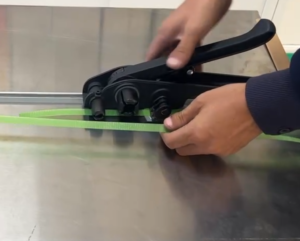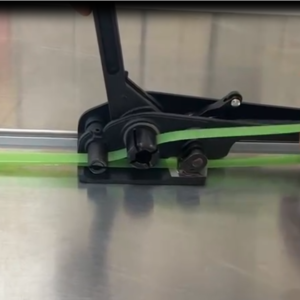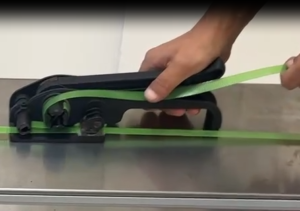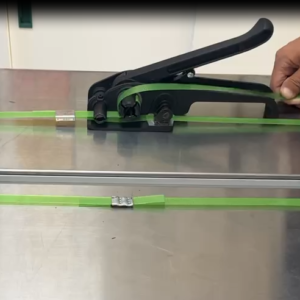The Ultimate Guide to Choosing High-Quality Plastic Strapping: Everything You Need to Know
Plastic strapping is widely used in various industries, especially in logistics, warehousing, and transportation. Choosing the right strapping can significantly improve packaging efficiency, reduce losses, and ensure the safety of products during transit. This article provides you with a comprehensive guide to selecting high-quality plastic strapping, helping you choose the most suitable strapping for your needs.
Types of Plastic Strapping
The most common types of plastic strapping available in the market are PP (Polypropylene) strapping, PET (Polyethylene Terephthalate) strapping, and Steel strapping. Each type has distinct characteristics and suitable applications.
- PP Strapping: Typically lighter and more cost-effective, PP strapping is suitable for medium and light packaging. It has good tensile strength and is commonly used in standard logistics and transportation.
- PET Strapping: Stronger than PP strapping, PET is suitable for heavy-duty or high-strength applications. It has better temperature resistance and UV protection, making it ideal for long-term storage or outdoor exposure.
- Steel Strapping: Steel strapping offers extremely high tensile strength and durability. It is ideal for securing heavy items but is more expensive and heavier.
Key Criteria for Choosing High-Quality Plastic Strapping
When choosing high-quality plastic strapping, several key factors should be considered:
- Tensile Strength
The tensile strength of the strapping determines its ability to withstand weight and external pressure during transit. Typically, PET strapping has higher tensile strength, making it suitable for heavier items. - Durability
High-quality plastic strapping should have strong resistance to temperature fluctuations, UV exposure, and abrasion. This is particularly important for items that are exposed to outdoor conditions for extended periods. - Width and Thickness
The width and thickness of the strapping should match the weight and volume of the items being secured. Wider and thicker straps are usually more suitable for heavy-duty packaging. - Elasticity and Elongation
High-quality plastic strapping should have good elasticity and moderate elongation, allowing it to absorb external impacts and reduce the risk of strap breakage.
Quality Evaluation Guide
How do you evaluate the quality of strapping? Here are some common evaluation methods:
- Tensile Test
Use a tensile testing device to evaluate the performance of the strapping under different forces. This test helps determine if the strapping can withstand the required pressure and if it breaks safely under maximum tension. - UV and Temperature Testing
Expose the strapping to high temperatures and UV rays to assess its weather resistance and stability. This is crucial for strapping that will be used outdoors or in varying environmental conditions. - Abrasion Resistance Test
Test the strapping’s abrasion resistance by rubbing it against hard surfaces. High-quality strapping should remain intact after prolonged use without fraying or breaking. - Real-world Usage Test
Test the strapping in real-world conditions, such as during transport, storage, and long-distance shipping, to ensure it performs well in typical operational environments.
Real-life Case Studies
Customer Case Study 1
For example: “Xingyuan Carton Factory reduced costs by 20% and improved packaging efficiency by using the PP strapping band and strapping machines provided by our company.”
Customer Case Study 2
for example: “A logistics company reported a 20% reduction in packaging time and a decrease in damage risks during transportation after switching to our PP strapping.
How to Choose the Right Plastic Strapping
When selecting high-quality plastic strapping, consider the following factors:
- Packaging Requirements: Choose the appropriate strapping based on the weight, volume, and environmental exposure of the items to be strapped.
- Strapping Type and Specifications: As mentioned earlier, PP, PET, and steel strapping are suitable for different applications.
- Brand and Quality Assurance: Choose a reputable supplier to ensure the quality and after-sales service of the strapping.
Image and Example Illustrations
- How to Properly Use Strapping
When applying strapping, ensure that the strap is properly tightened and use professional tools to seal the ends. Below are some illustrations showing how to use manual and automatic strapping tools:- How to use manual strapping tools
Choosing high-quality plastic strapping is crucial for ensuring the safety and efficiency of your packaging, reducing long-term costs, and enhancing the overall user experience. By understanding the characteristics of different types of strapping, selecting the appropriate standards, and evaluating the quality, you can find the most suitable strapping solution for your needs.







